Episode 294: HubSpot in 2023, Approvals functionality, HubSpot Meetings tip, Paid seat gotcha
Welcome to HubShots Episode 294: HubSpot in 2023, Approvals functionality, HubSpot Meetings tip, Paid seat gotcha This edition we dive into: ...
This edition we dive into:
You can listen to this episode of the show here.
Did a colleague forward this episode to you? Sign up here to get yours every Friday.
Please forward this on to your work colleagues.
Recorded: Monday 13 September 2021 | Published: Friday 17 September 2021
I had a meeting with one of our (my wife and my) financial advisors this week - we’re currently restructuring some company arrangements across the various businesses we run.
After a 90 minute session there was a ton of notes, a bunch of spreadsheets with capital gains and other tax considerations, plus a list of assets that needed to be transferred between entities. To make matters unsettling, we discovered that advice that we had received from an accountant a few years ago was incorrect and needed to be unwound.
For our financial advisor, this is all just standard stuff. To him it is easy to understand, digest and action.
But for me it was overwhelming. At the end of it the financial advisor said ‘let me know what you want to do.’ Frankly, I had no idea. Where to even start?
I left the meeting (ie the zoom call) with a sense of anxiety, and a feeling of despair. Perhaps what I actually wanted to do was park the whole thing and not think about it...
It occurred to me afterwards that all the financial advisor needed to say was: ‘there’s a lot there - but here’s the one simple thing I’ll do to get started…’ I would have given the go-ahead right there and likely felt my anxiety dissipate quickly.
Why do I mention all this?
I was chatting with Ian about the experience afterwards, and we discussed this growing sense of overwhelm that everyone is feeling these days - after too many zoom calls, too many lockdowns and too many results to achieve. Most people, it seems, are exhausted and can’t cognitively handle complexity anymore.
It’s why we’re seeing far too many knee-jerk marketing campaigns launched on a tactical whim versus a strategic consideration (‘we need to do webinars’, ‘we need to be on TikTok’, ‘we need to send out swag’, etc). More on this in Shot 8.
It’s also why more people than ever (especially in marketing) are looking for new roles. We’re looking for distraction from the overwhelm.
Looping back to my financial advisor experience (and how he made feel overwhelmed) - I realised I’m probably doing the same thing (but with marketing) for some of our clients. Whilst I’m comfortable with marketing strategy and tactics, for them it can be overwhelming - it’s not what they do day in, day out.
So I’ve realised I need to adjust. I need to get back to simple steps. One step at a time.
Perhaps this is food for thought for your activities. Are you breaking down your strategies and plans into simple steps for your clients (be they external customers, or internal stakeholders)? Are you avoiding overwhelming them.
Be their source of relief, not their source of anxiety.

There’s a backlog of items to mention - due to us having a different format for our last few episodes whilst we did a dive into HubSpot CMS Suite Starter, HubSpot CRM Suite Starter and HubSpot CRM Suite Pro.
Here’s the key items of interest we noticed:
A quick tip when using the Marketing Email Health tool (from your Marketing > Email area) - you can filter down by specific email subscriptions eg here’s the email health ratings for our HubSpot weekly email:
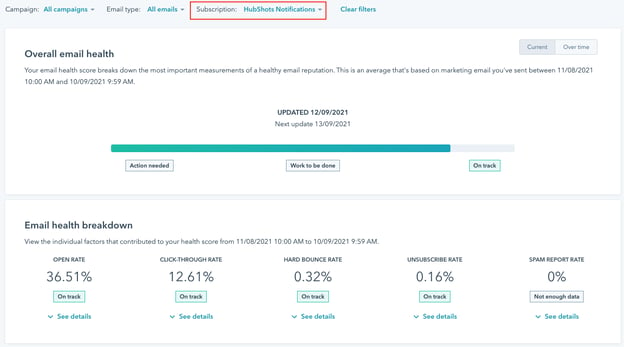
Things are looking pretty good.
Compare that to another of our brands - where things definitely need some attention:
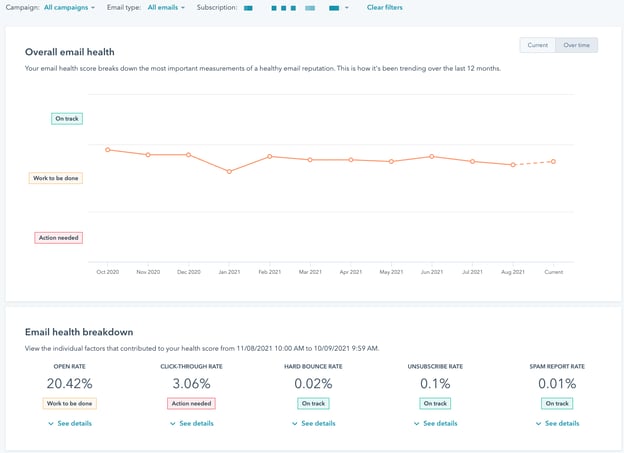
Notice also that you can choose to view the Current rating, versus the trend over time.
There are many more things on this dashboard but 2 things we want to highlight so teams can stay on top of their deals.
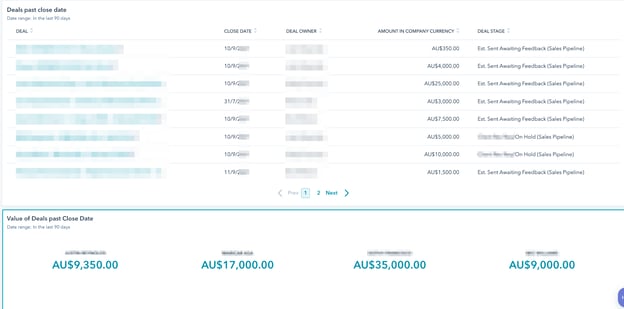
In Settings you can control whether Knowledge Base search listing pages (ie not the actual knowledge base articles of course, only the listing pages) will be blocked from Google.

In most cases, we recommend you block the listing pages. The main reason is because there can end up being tons of variations of the listing pages (eg you could run into hundreds of variations) - all chewing up your allocation of Google crawl budget. Instead, you want to keep Google focussed on the actual knowledge base articles.
Note: this is similar to why we usually block tag and category blog listing pages from Google.
It’s important to be aware of this change, rolling out now.
Potential gotcha: some users have seen a message about this in their portal and thought it meant all the actual articles were getting blocked! That’s not the case at all (it’s just confusing wording in the message) - it’s just the listing pages.
This is a very handy action for assigning contacts, deals and tickets to various owners:

Owners can be set based on specific users and teams:
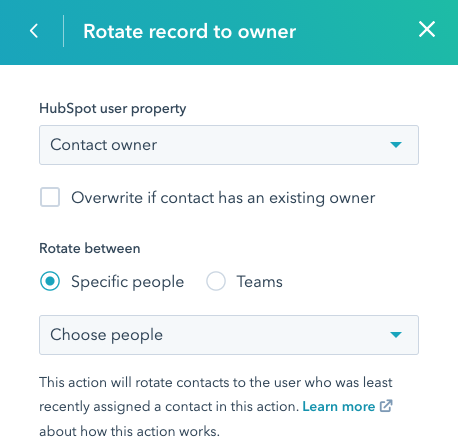
However, an often missed feature is that the ‘owner’ field can include custom User lists. Eg at XEN we have an Account Manager ‘owner’ field on contacts (as well as the actual Contact Owner). For example, I might be the actual Contact Owner, but the Account Manager is another member of the team (not me).
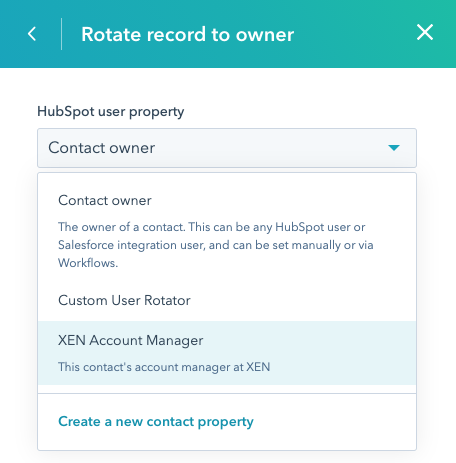
This is handy when a contact becomes a customer for example. I might still be the main Contact Owner, but one of our Account Managers can automatically be assigned.
Note: Rotating User lists is an Enterprise feature.
I was scouting around in the HubSpot Settings and discovered this setting for when I last reset my password:
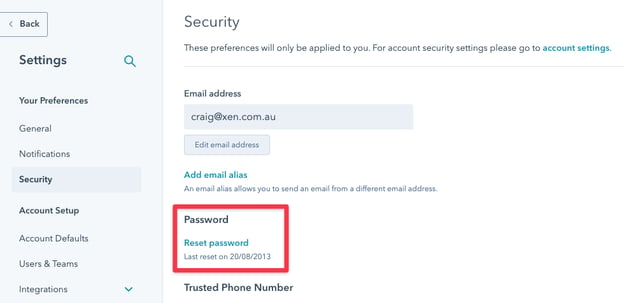
Yep, back in 2013 - that’s 8 years ago. Time flies.
Just for fun I looked in LastPass (where we store all our passwords) to check how strong the password was. I was pleasantly surprised to see it was indeed a very strong password - good to see we’ve had decent password processes in place for a while. But I decided it was time to reset it anyway:

When did you last reset your password?
In Shot 1 I mentioned the battle we’re all fighting with overwhelm, and touched on one of the side-effects we’re seeing: the flight to tactics.
Just in the last few weeks we’ve seen otherwise long term, strategic marketers falling into the trap of implementing short term, reactionary activities such as new event types, content formats and social channels.
Now, don’t get me wrong - I’m a big fan of test and measure. And the need to quickly adapt (or ‘pivot’ if you want to play along with your marketing bingo cards). But rapidly changing times don’t necessarily justify embracing marketing distractions.
Here’s how to check - can you answer the question: Why are we doing this?
If you don’t have a clear answer, then it’s likely you’re chasing distraction (as opposed to testing).
Back in episode 252 we chatted about maintaining a testing backlog.
Many marketers are often highly creative - and we need to continually capture those ideas.
But the most successful marketers are disciplined and strategic. They make considered decisions (albeit quickly) and implement methodically, measure accurately, and analyse carefully.
The reason they can do this is because they are careful with their time. They have time for analysis, because they say ‘No’ to most of the marketing temptations (distractions) that attack them daily.
What have you said Yes to lately, that you probably should have said No to? It is too late to say No now?
BTW I am basically preaching to myself with this shot.

(Fun fact: this ‘How about No bear’ meme has been around since 2006)
Via the HubSpot product updates blog.
This time a year ago HubSpot was releasing the Email Health Tool (ie that we covered in Shot 3).
Rand’s latest piece on his SparkToro site discusses the reduced exposure our content (eg assume blog post) gets on platforms these day, whether it’s social sites (Facebook, Twitter, etc), communities (Reddit, Discord, etc) and Google (and Bing).
Given that the potential for our owned content to be seen is so diminished, what are we to do? Should we even bother?
In most cases the answer is still yes - providing value is important. But it’s a given, not an exception these days.
It’s one of the reasons Ian and I still prepare this podcast each week - it’s continual content creation (hopefully high value) that we then distribute in multiple formats and channels.
And it’s the reason why we’ve been focusing on building our email list over the last year - it’s now the highest distribution channel for our content.
(BTW, if you haven’t yet subscribed, make sure you sign up for free on the HubShots site here)
Here are three takeaways:
One of the ways to do this is to look at the HubSpot Traffic Analytics Tools by looking at Sources.
Then look at the Page Analytics and Content Details to gain more insight.
Ian and I chatted further about this in a recent webcast on the HubShots Show - you can watch it on YouTube here:
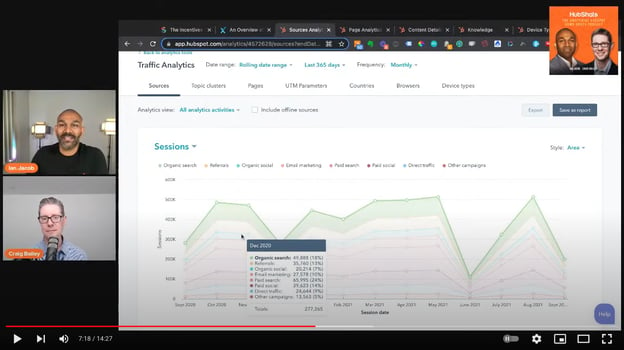
“Life is ten percent what you experience and ninety percent how you respond to it.”
Useful thread on Twitter from Will Critchlow on internal linking. In particular how internal linking may benefit the linking from page (more so than the linked to page) - which seems counter to what you may have previously thought.
Connect with HubShots here:
Connect with Ian Jacob on LinkedIn and Craig Bailey on LinkedIn
HubShots, the podcast for marketing managers and sales professionals who use HubSpot, hosted by Ian Jacob from Search & Be Found and Craig Bailey from XEN Systems and XEN Solar.
HubShots is produced by Christopher Mottram from Podcastily.
Please share this with colleagues - it helps us improve and reach more marketers.
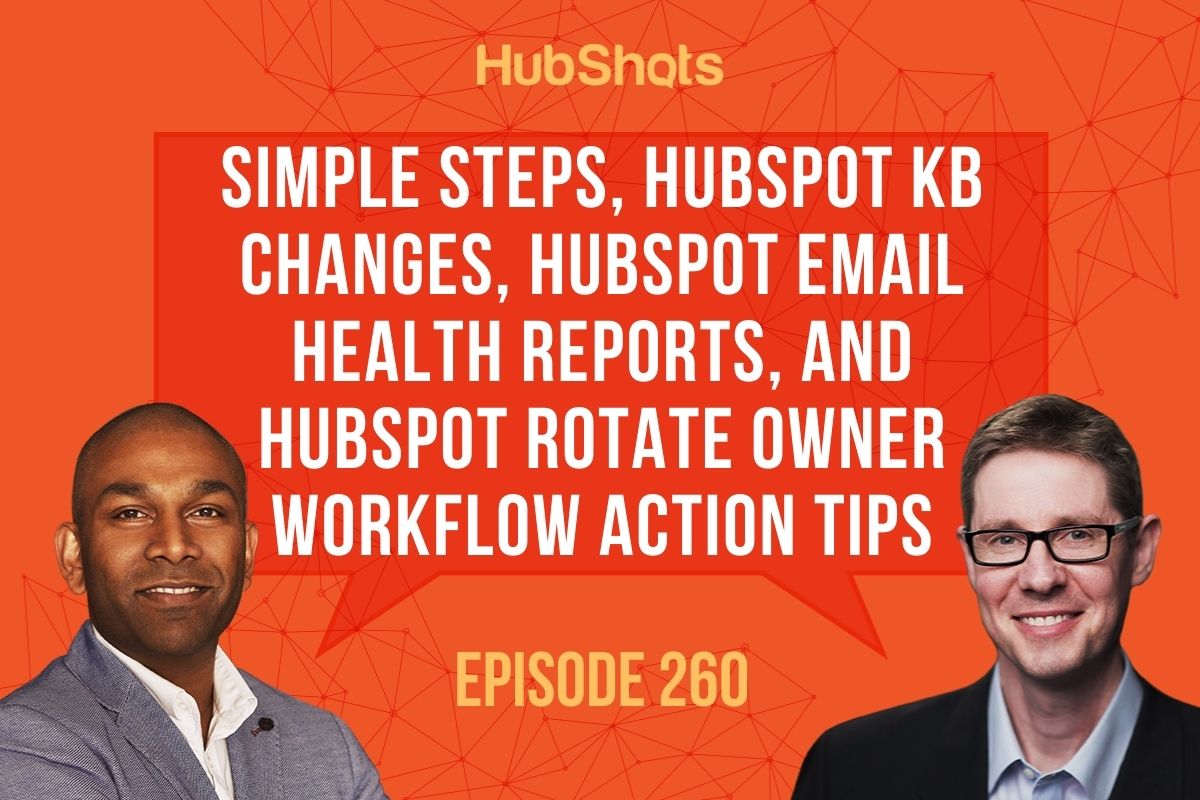
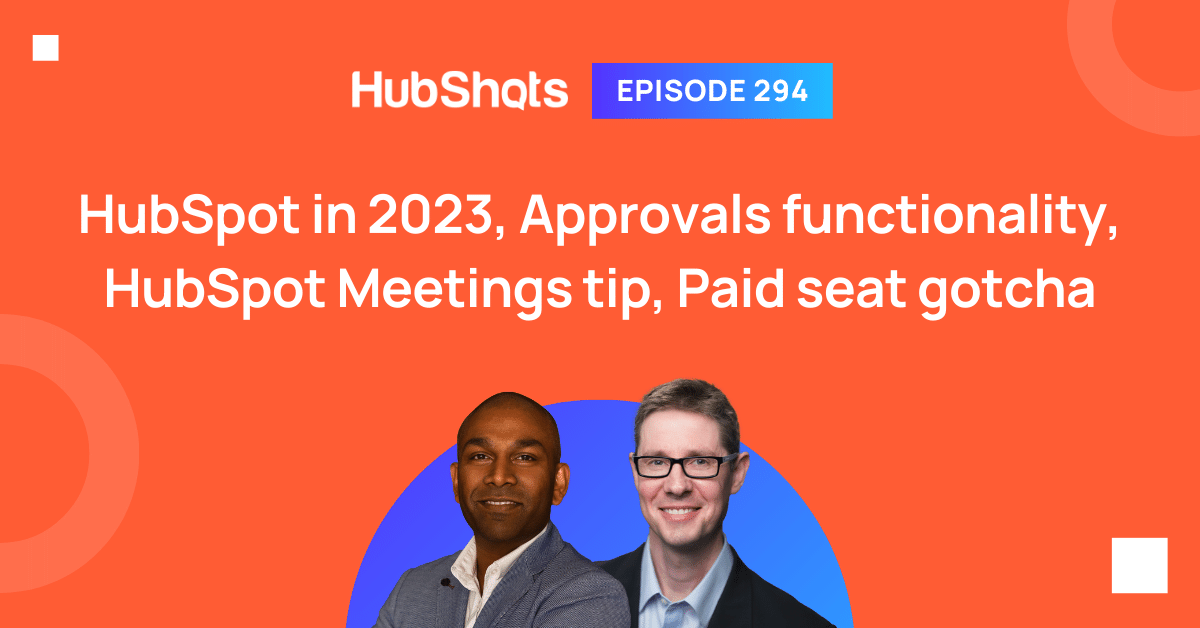
Welcome to HubShots Episode 294: HubSpot in 2023, Approvals functionality, HubSpot Meetings tip, Paid seat gotcha This edition we dive into: ...
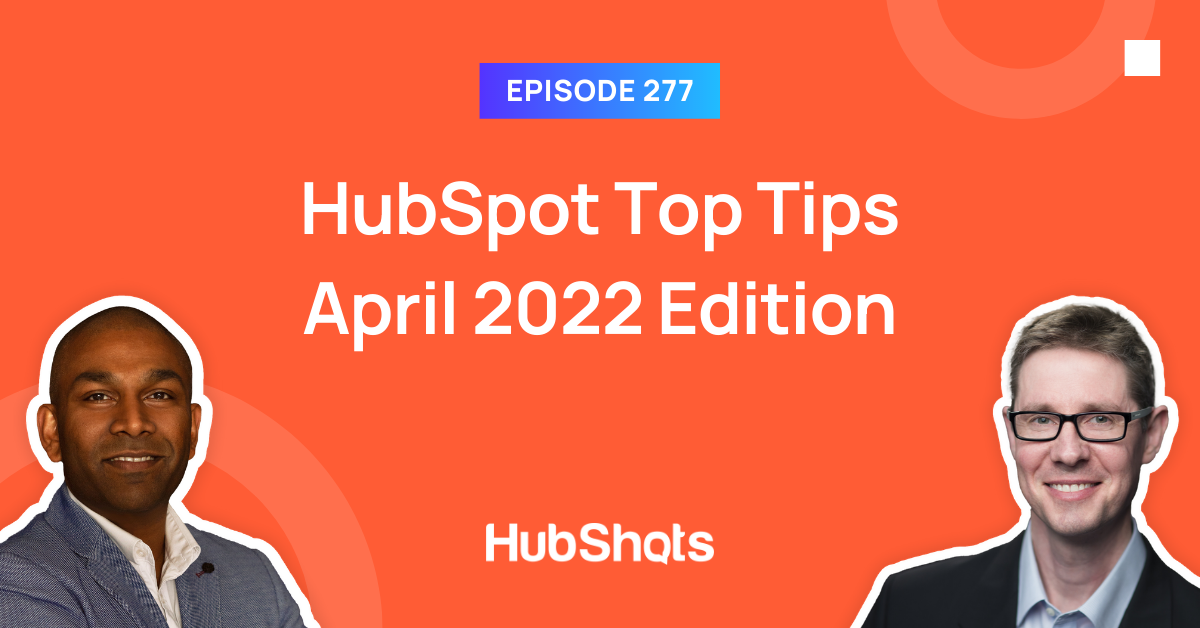
Welcome to HubShots Episode 277: HubSpot Top Tips April 2022 Edition This edition we dive into: Quick tips for improving your HubSpot efficiency...
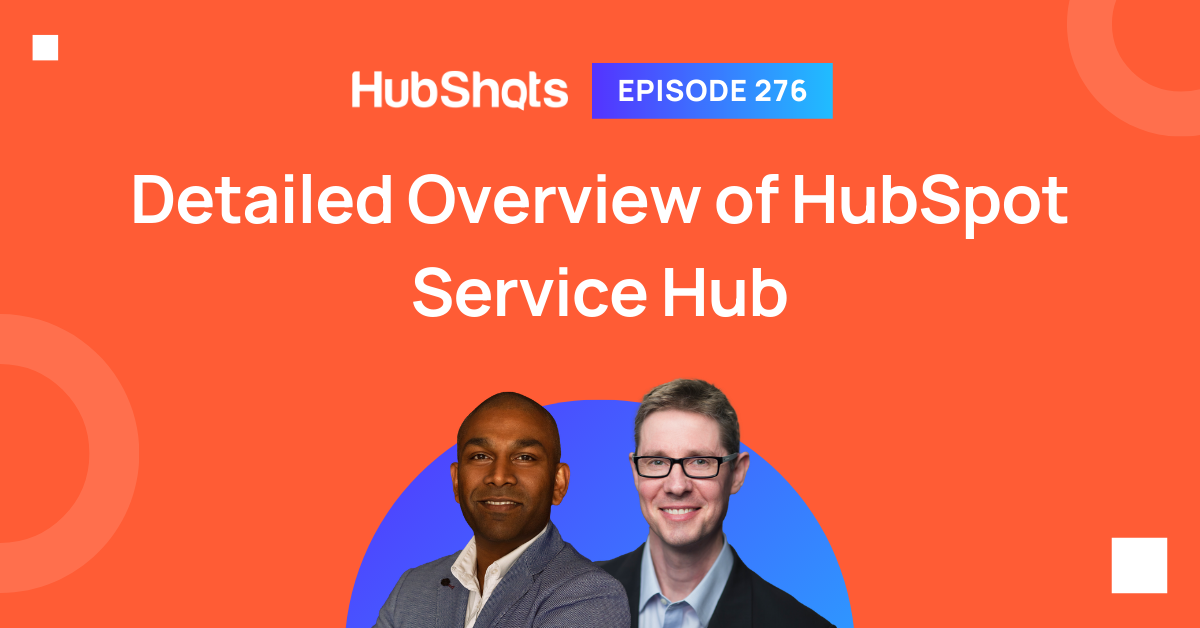
Welcome to HubShots Episode 276: Detailed Overview of HubSpot Service Hub This edition we dive into: Speed of response is your differentiator ...